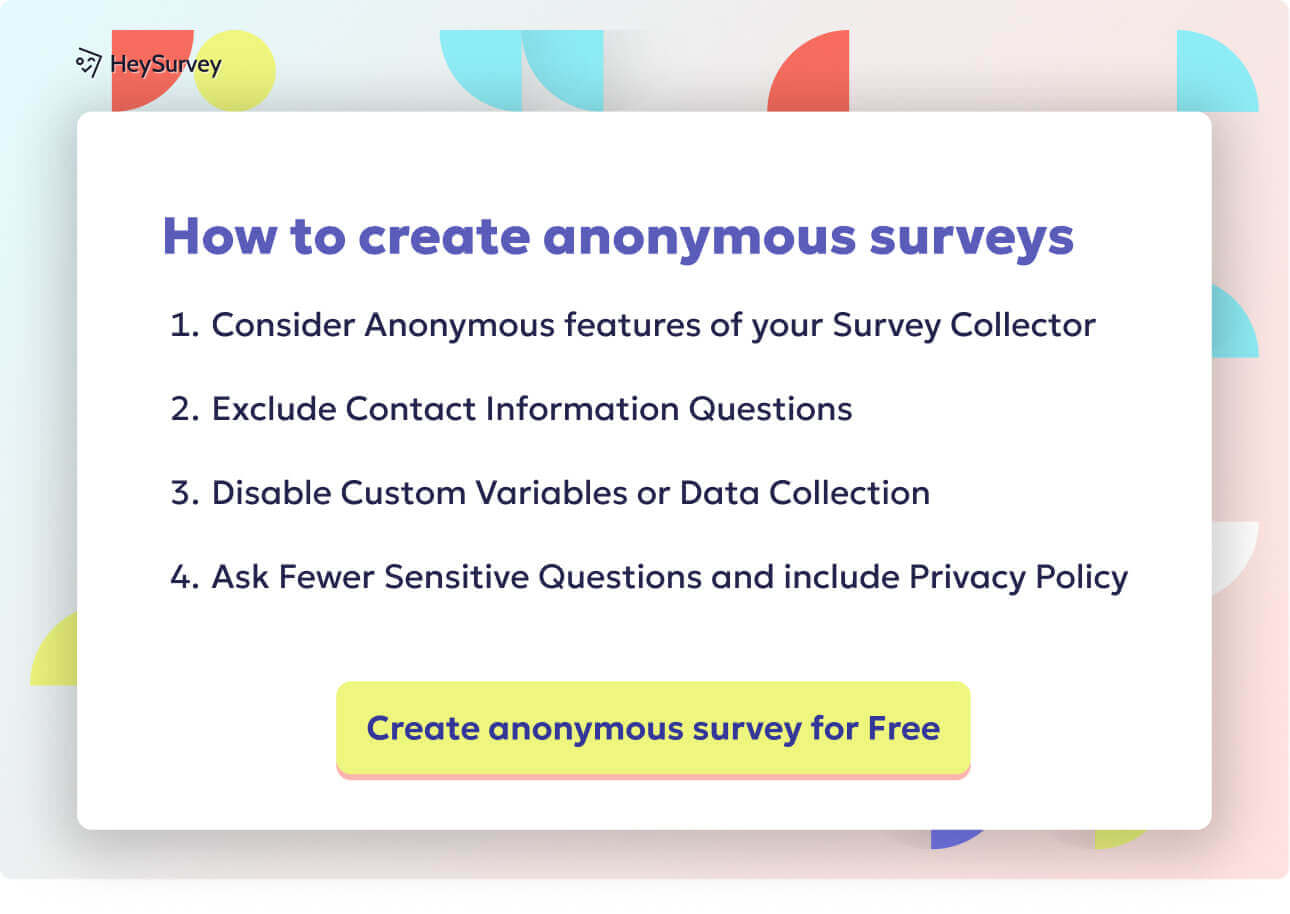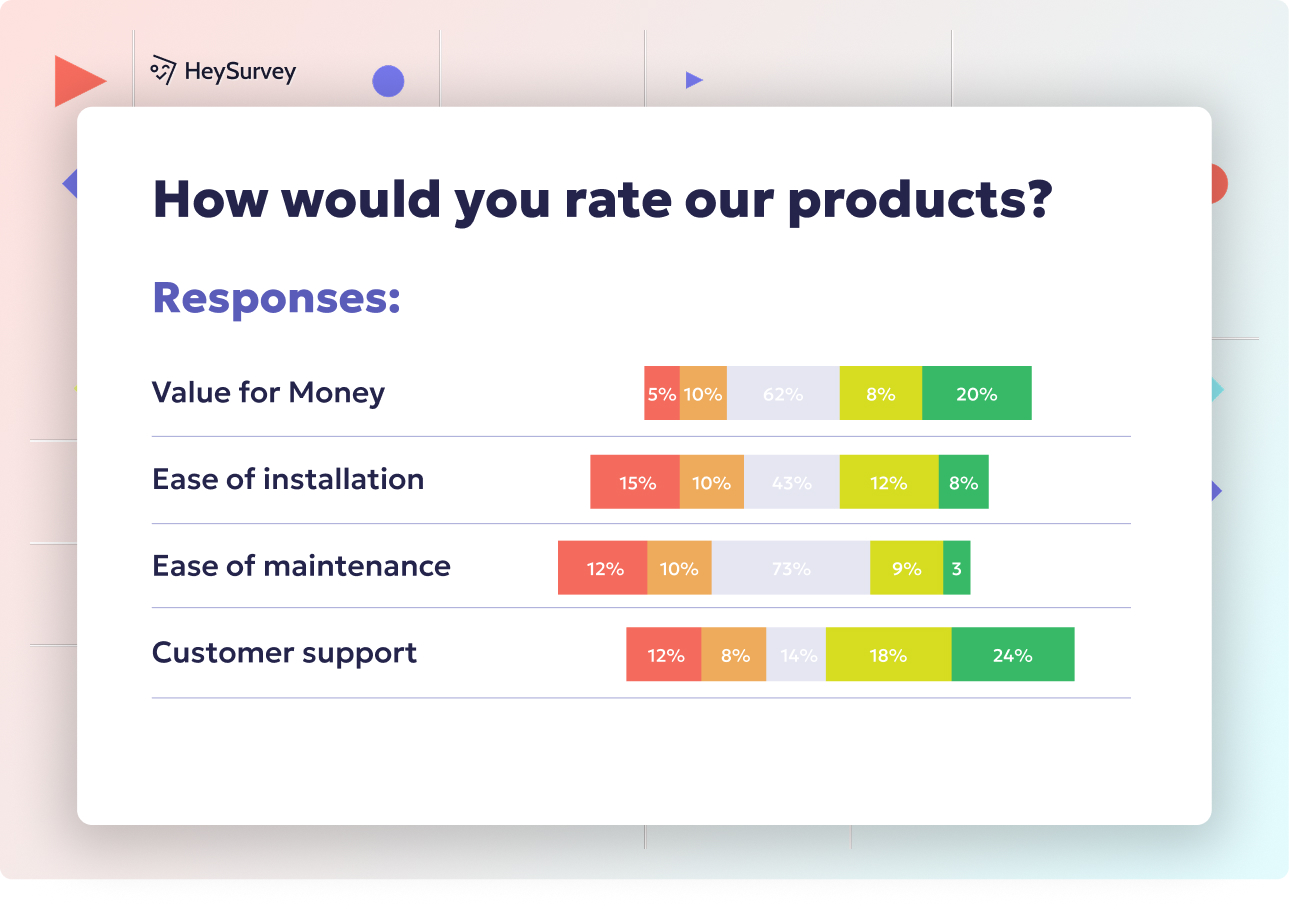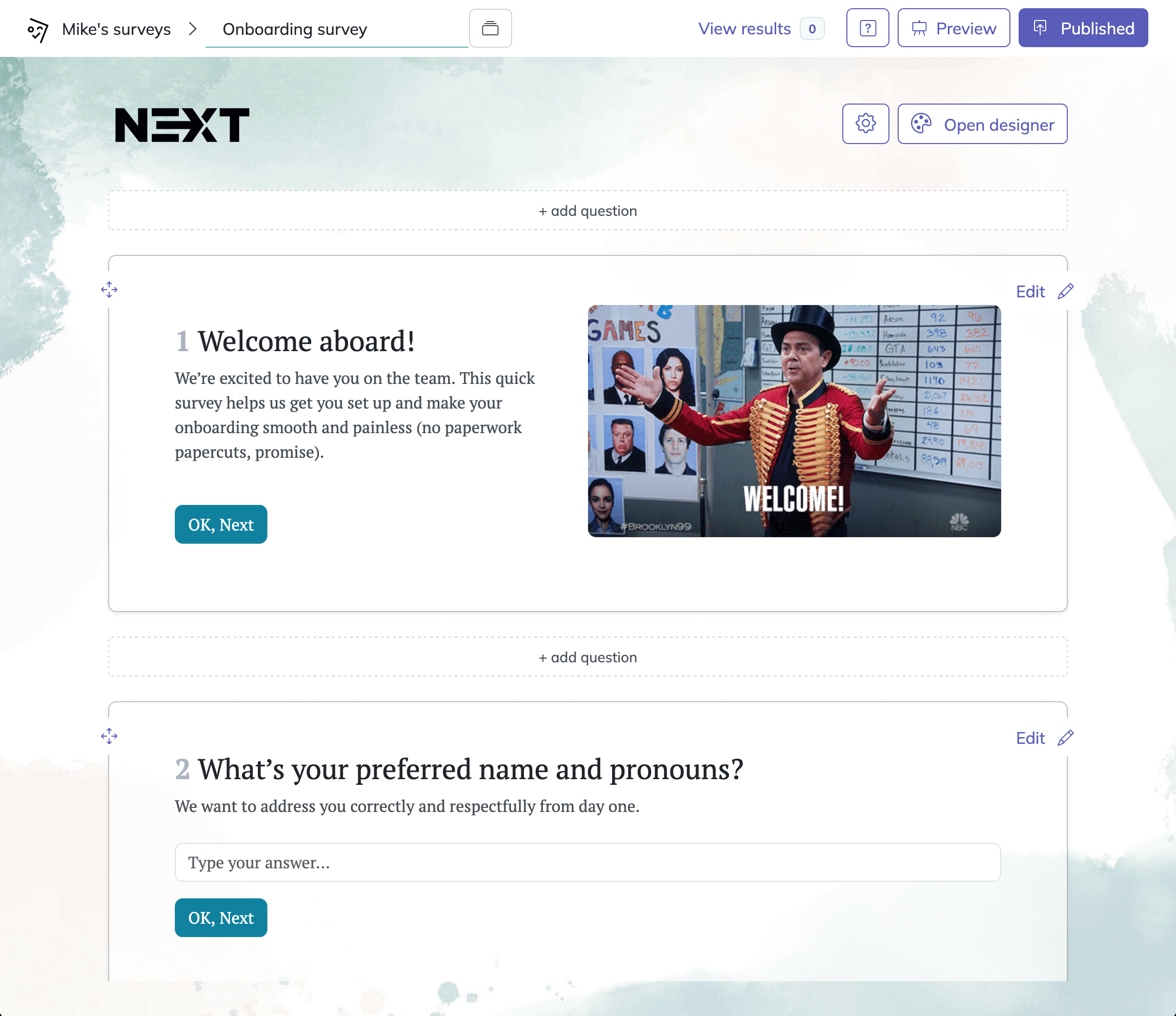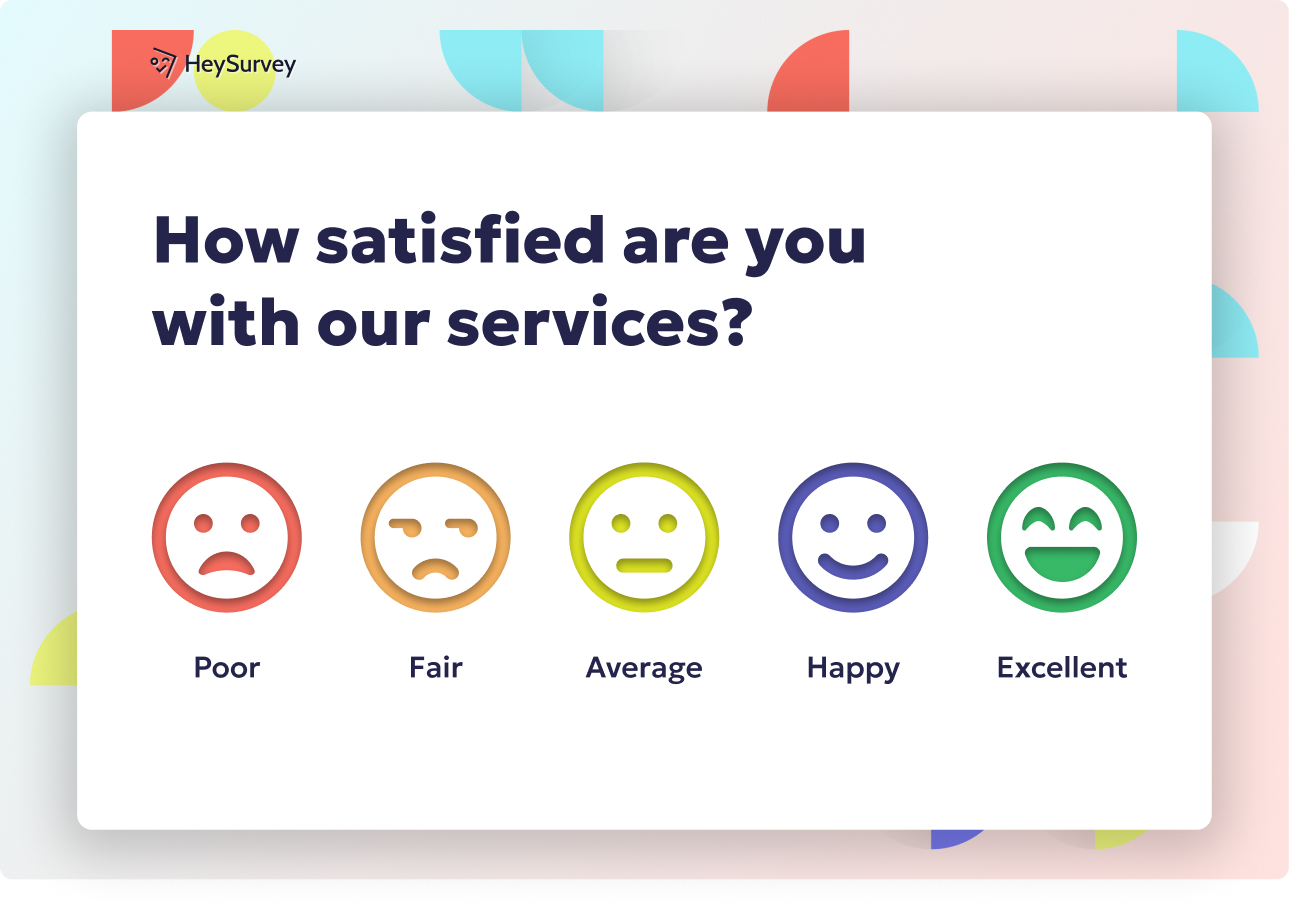27 Work Environment Survey Questions to Boost Workplace Culture
Explore 25+ work environment survey questions covering physical space, psychological safety, remote work, safety, collaboration, and more.
A great workplace is more than just snacks and a swanky office—it’s about how people actually feel and function day-to-day. Work environment surveys can help leaders understand and improve what people experience at work, from air conditioning wars to feeling truly heard. The right surveys, asked at the right time, unlock not just complaints but powerful ideas and positive change. Next up, you’ll find six key types of work environment surveys with sample questions and best practices that make responses count.
Physical Workspace Satisfaction Survey
Why and When to Use This Survey Type
When it comes to workplace comfort, little things matter—and so do the big ones. A physical workspace satisfaction survey helps uncover gripes about desk set-ups, meeting spaces, and even the lack of your favorite coffee creamer. Use this survey after a big office move, a fresh redesign, or when you notice empty desks multiplying like rabbits after a long weekend.
Launching such a survey at the right moment means you’ll catch: * Early warning signs of dissatisfaction after a change * Reactions to new office amenities (or missing ones) * Clues about post-pandemic preferences for space, flexibility, and hygiene
The aim is not just to fix broken chairs; it’s to unlock productivity by matching the workspace to people’s needs. Plus, this is your chance to gather feedback you might otherwise only get when someone hands in their badge or gripes in the break room.
Sample Questions
How satisfied are you with the ergonomic comfort of your workstation?
Does the current office layout support the way your team collaborates?
Which office amenities (e.g., kitchen, lounge, fitness area) do you feel are missing or inadequate?
How would you rate the cleanliness and maintenance of shared spaces?
What one change to the physical workspace would most improve your daily productivity?
Mixing these question types allows you to spot small irritants and spot potential game-changers. The answers often speak volumes about what truly attracts and retains talent beyond salary. The sweetest spot? Use the data to make tiny fixes that bring surprisingly big smiles.
A study found that employees in Activity-Based Workplaces (ABW) reported the highest satisfaction with overall work area comfort and building satisfaction. (emerald.com)

How to Create Your Work Environment Survey with HeySurvey in 3 Easy Steps
HeySurvey makes survey building a breeze—even if you’ve never done it before. Ready to get started? Below are the three essential steps to have your work environment survey up and running. After that, check out the bonus tips to boost your survey’s impact.
Step 1: Create a New Survey
Start by clicking “Create New Survey” on HeySurvey’s homepage. You can either:
- Choose a pre-built template designed for workplace or employee satisfaction surveys (pro tip: this will save you tons of time!), or
- Start from a blank sheet if you prefer total control.
Once you pick a template or blank survey, you’ll enter the Survey Editor. Here you can rename your survey internally (think: "Office Comfort Check" or "Psych Safety Pulse"). This name is just for you, so no pressure on creativity!
Step 2: Add Your Questions
Now the fun part—filling your survey with questions. Click “Add Question” either at the top or between existing questions. HeySurvey offers tons of different question types, but for workplace surveys, you’ll likely use:
- Scale questions (e.g., “How satisfied are you?” rated from 1 to 7)
- Multiple-choice questions with single or multiple selections
- Open-ended text fields to capture thoughtful feedback
Type in your question, choose whether it’s required or optional, and add answer options. Don’t forget to include an “Other” option for multiple-choice questions—people love having the freedom to say it their way.
Want to get fancy? Use branching logic to skip irrelevant questions based on prior answers. For example, if someone works fully remote, skip questions about office seating.
Step 3: Publish Your Survey
After confirming your questions look great, click “Preview” to see exactly how respondents will experience it. If all looks good, hit the bright “Publish” button.
You’ll need to sign up or log in to publish, as HeySurvey requires an account to collect and view responses. Once published, you’ll get a sharable link to send out by email, Slack, or embed on your intranet—easy-peasy.
Bonus Steps for a Pro-Quality Survey
Apply Your Branding: Upload your logo and tweak colors/fonts in the Designer Sidebar to make the survey yours. Branded surveys appear more professional and get better response rates.
Define Settings: Set start/end dates, decide if you want to limit responses, or add a completion redirect URL (like a thank-you page or internal website).
Set Up Branching: Create paths that customize the questions shown based on individual answers. This makes surveys feel smarter and less tedious.
Click the button below to open a relevant template and dive right in! Your ideal employee feedback awaits.
Psychological Safety & Well-Being Survey
Why and When to Use This Survey Type
Trust isn’t something you can lock in a drawer—and psychological safety is critical for teams to thrive. This survey type digs deep into whether people feel respected, valued, and comfortable taking smart risks without watching their backs. When there’s a leadership shake-up or after a team reorg, don’t just check if the nameplates got switched; check if people feel safe to share, ask tough questions, and yes—even fail.
Deploying these questions is best: * After major changes to management or team structure * When rumors or anxiety seem to be rising faster than the coffee supply * Following spikes in turnover or drops in engagement
A culture of openness is your best defense against disengagement and stagnation. Strong psychological safety means problems surface before they explode, and innovation actually happens.
Sample Questions
I feel comfortable voicing opinions even if they differ from my manager’s.
How often do you experience undue stress or anxiety at work?
My team treats mistakes as learning opportunities rather than failures.
Do you know where to seek mental-health support within the company?
What could leadership do to enhance psychological safety here?
Answers here don’t just diagnose problems—they signal how far your values reach beyond posters in the hall. With this feedback, you can target leader training, beef up support resources, and celebrate teams that model healthy dialogue.
A study found that executives are 43% more likely than individual contributors to feel safe taking risks at work. (newsroom.wiley.com)
Hybrid & Remote Work Environment Survey
Why and When to Use This Survey Type
Not everyone is making sourdough at home, but most people want a work set-up that works—wherever “work” happens. A hybrid & remote work environment survey checks if employees have the tools, clarity, and communication to succeed whether they’re at a kitchen table or conference table. Use this survey after hybrid schedules roll out, or when new communication tech is launched and you want to spot friction before Slack channels explode.
The times to use this most effectively include: * Post-pandemic return to work shifts (hybrid, remote, or otherwise) * After adoption of new software or hardware for distributed teams * Sensing growing pains or exclusion among those working offsite
The goal here is to make sure everyone feels included, effective, and up to speed—because nobody likes to be the last to hear big news or feel out of the loop at virtual watercoolers.
Sample Questions
Our current tech stack (VPN, video, chat) enables me to work efficiently from any location.
How clear are the expectations about on-site vs. remote days?
Rate the quality of communication between remote and in-office colleagues.
Do you feel included in impromptu decisions when working remotely?
Which remote-work benefit or tool would most improve your experience?
By analyzing the responses, you can tune policies, provide better tools, and ensure everyone stays on the same page, no matter the ZIP code. When people know they can rely on both tech and team, productivity and morale soar.
Health, Safety & Compliance Survey
Why and When to Use This Survey Type
Nobody’s best work happens when they’re worried about getting hurt—or hit with a compliance violation. A health, safety & compliance survey checks if employees know the ropes and have what they need to stay safe (and keep the boss out of trouble with OSHA or ISO auditors). Deploy it after a safety incident, policy change, or before an audit, and you’ll get feedback that helps head off risks and build a safety-first culture.
Best timing for deploying this survey: * Shortly after an accident or near-miss to gauge understanding and readiness * When rolling out new procedures or safety gear * After annual compliance reviews or regulatory updates
You want everyone, from intern to executive, to feel like safety is a shared priority, not just a dusty binder in a back office.
Sample Questions
I know the correct procedure for reporting a safety hazard.
How safe do you feel when performing your daily tasks?
Have you received adequate training on emergency evacuation routes?
Are safety equipment and PPE readily available when needed?
What additional safety measures would you recommend?
Honest answers here can save lives—and reputations. Acting fast on suggestions shows that feedback isn’t just filed away, but used to make meaningful improvements in workplace safety.
Employee involvement in health and safety management is associated with a more positive safety climate, with 77% of employees feeling encouraged to raise concerns in such environments, compared to 20% in poor safety climates. (hse.gov.uk)
Team Collaboration & Communication Environment Survey
Why and When to Use This Survey Type
Great work rarely happens solo, and a team collaboration & communication survey uncovers snags that keep teams from clicking. With hybrid and cross-functional teams now the norm, clear communication is both a superpower and a struggle. Deploy this survey before shifting to agile, after a merger, or when projects seem stuck in endless email threads.
This survey is particularly strong when: * Kick-starting new ways of working (agile, cross-functional pods, etc.) * After reorganizations, acquisitions, or integrations * Spotting bottlenecks that lead to missed deadlines or confusion
You’re looking for the barriers that block information or slow down teamwork—things people seldom voice in meetings but will share privately.
Sample Questions
Meetings in our organization result in clear action items.
Information flows freely between departments.
How effective are current collaboration tools (e.g., Slack, Teams, Confluence)?
I receive feedback that helps me improve my work.
What is one thing that would improve team communication?
With these insights, you can streamline meetings, upgrade knowledge sharing, or simply cut the jargon so everyone’s rowing in the same direction. Every solved blocker is a win for morale and momentum.
Noise, Lighting & Distraction Survey (Environmental Conditions)
Why and When to Use This Survey Type
There’s nothing quite like the buzz of a humming office—unless it’s literally buzzing from too much noise or flickering lights. The environmental conditions survey tackles distractions from sound, lighting, and air quality that sap focus and fuel complaints. Launch it after complaints about distractions, a move to a new space, or when upgrading for sustainability.
Most valuable times to use this survey: * Following a real or virtual relocation of people or furniture * After reports of headaches, eye strain, or focus issues * When sustainability upgrades or wellbeing programs are on the horizon
Sometimes, fixing complaint-worthy conditions is faster and cheaper than hiring more people—a small investment in comfort pays off in big productivity.
Sample Questions
Rate the average noise level in your primary workspace.
How satisfied are you with natural lighting in your area?
Does poor air quality (stuffy, odors, temperature swings) impact your performance?
How easy is it to find a quiet space when you need deep focus?
Which environmental factor most affects your ability to concentrate?
Armed with this data, you can target easy wins—like better headphones or blackout curtains—that make every day a little brighter and quieter for everyone.
Best Practices: Dos and Don’ts for Creating & Distributing Work Environment Surveys
Every great survey starts with clear intentions—and a plan to make life better after the results roll in. Survey best practices start with the basics: keep it short, simple, and focused. Use plain language and always explain why you’re asking for certain feedback. The more transparent you are, the more honest your responses will be.
Do these to create effective surveys: * Align every question with your survey’s goals to avoid getting lost in the weeds * Keep surveys brief—10 minutes or less is the sweet spot for completion * Mix it up by using a blend of quantitative (scales, multiple-choice) and qualitative (open-ended) questions to capture both trends and individual insights * Guarantee anonymity to eliminate fear of retaliation and boost candor * Always close the loop: Share results and the action plan afterward so people see their input matters
Don’t fall into these classic traps: * Don’t stuff the survey with jargon or corporate buzzwords—it’s a shortcut to confusion * Avoid double-barreled questions (e.g., “Is your desk comfortable and quiet?”) that muddy the results * Don’t wait too long to share findings or update on next steps; staleness kills enthusiasm * Never ignore responses from specific groups like interns, night-shifters, or contractors; every voice counts * Resist the urge to rely only on annual surveys—smaller, more frequent pulse checks give you better data and keep issues from festering
Make the process even sharper by: * A/B testing questions with small groups to see which wording gets clearer answers * Timing survey sends for top response rates—typically mid-week or just before big changes * Tagging responses and themes as they come in, so analysis takes hours, not days
Every step you take to make surveys smoother and more inclusive pays off in more insights and happier teams.
Conclusion & Next Steps for Turning Survey Insights into Action
A workplace where people love to work starts with listening—really listening. Targeted work environment surveys are your best bet to pinpoint what’s working and what’s not, from the kitchen to corner office. Prioritize the fastest, most meaningful fixes and share quick wins loudly. Keep the momentum by pulsing for feedback regularly, not just once a year. With continuous listening, you’ll shape a workplace that’s not just productive but a joy for everyone who walks through the door.
Related Employee Survey Surveys

29 Essential Post Mortem Survey Questions for Project Success
Discover 25+ essential post mortem survey questions to improve projects, boost team morale, and d...

31 Change Readiness Survey Questions to Boost Your Success
Discover 25+ sample change readiness survey questions to assess attitudes, barriers, and confiden...

31 Retreat Survey Questions to Collect Actionable Feedback
Discover 26 essential retreat survey questions to gather actionable feedback before, during, and ...
